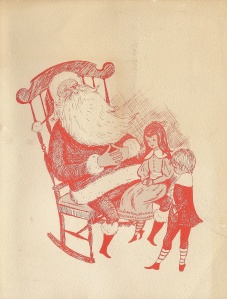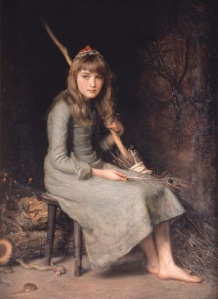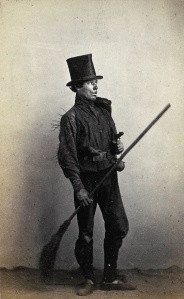 Around this time of year, at least for children of a certain age, there is a lot of thought about Santa: is Santa real, how does he get everywhere in the world in one night, how does he get down the chimney, etc.? While I have no idea about those things (although I suspect that Santa is “real” in the sense that the myth endures), I did want to talk a little bit about the chimney.
Around this time of year, at least for children of a certain age, there is a lot of thought about Santa: is Santa real, how does he get everywhere in the world in one night, how does he get down the chimney, etc.? While I have no idea about those things (although I suspect that Santa is “real” in the sense that the myth endures), I did want to talk a little bit about the chimney.
Of all the ways that presents and good things might come into one’s life, the chimney would, at first glance, be a bad plan—dirty, likely to be filled with fire, narrow and uninviting. A chimney is where we turn wood into smoke, and what exits by way of the chimney is of the least value to humans—soot, ash and greenhouse gas. Ashes to ashes and dust to dust, the burned down remains of the hearth’s fire would seem to be the end of the road, and yet they mark the scene of a new beginning.
 In Cinderella (which means girl of the ashes), the true princess is to be found devalued by the ash-heap while her less-worthy stepsisters get to go the ball… until Cinderella is transformed by her fairy godmother. In Mary Poppins, Bert is the low-class and devalued chimney sweep in the view of proper London society, but on his jolly holiday with Mary he’s a sparkling dandy.
In Cinderella (which means girl of the ashes), the true princess is to be found devalued by the ash-heap while her less-worthy stepsisters get to go the ball… until Cinderella is transformed by her fairy godmother. In Mary Poppins, Bert is the low-class and devalued chimney sweep in the view of proper London society, but on his jolly holiday with Mary he’s a sparkling dandy.
In other words, there is a long history of associating the spiritually good with the humble, dirty and overlooked. Rumplestiltskin, where the girl must spin straw into gold, is another example of this; “straw” is code for poop since straw is where the animals leave their gifts in the barn—and “spinning” the straw marks it’s transformation into something of great value. The humble birth of Jesus in the manger is also consistent with the theme of spirit gold being found in unlikely and generally low-rent places.
 Thus it makes sense that Santa would bring treasure down the Chimney, reversing the normal order of things where wood or coal goes up in smoke. The magic of a person dressed in red and white, still appearing pristine after however many billion chimney trips, rather than soot-covered and wrecked, further underscores the magical aspects of value appearing in the midst of worthless ash. In alchemy there are phases related to blackening (death), whitening (purification) and reddening (new life); thus we can find all sorts of potential symbolism of transformation in the very fact that the chimney is the portal through which Christmas comes to children.
Thus it makes sense that Santa would bring treasure down the Chimney, reversing the normal order of things where wood or coal goes up in smoke. The magic of a person dressed in red and white, still appearing pristine after however many billion chimney trips, rather than soot-covered and wrecked, further underscores the magical aspects of value appearing in the midst of worthless ash. In alchemy there are phases related to blackening (death), whitening (purification) and reddening (new life); thus we can find all sorts of potential symbolism of transformation in the very fact that the chimney is the portal through which Christmas comes to children.
I have always found embers burning on the bricks of a fireplace particularly evocative—tiny red-orange specks glowing, rippling with dark foreshadowing of extinction, glowing longer than I think they will last and then, suddenly, going pitch black. Life is there one moment, and then it’s gone.
So, let’s dedicate today to valuing our own devalued places—our own dark feelings of ashy anger and sooty sorrow, our shame and guilt, our testy falling short, our self-involved foibles and our self-justified cruelties. I’ll be the first to admit to them, and probably the last to change them, but one never knows. As we have crossed the threshold of the Winter Solstice, and the days are, however subtly, growing longer now, perhaps my posts will grow shorter (but, I hope, as filled with good spirit to help you, the reader, join me in trying our best with our kids). Parenting is about showing up, and thus if I show up here and not in my own house, I fail us both. With that in mind, I mark today’s end of words—in the service of my own, and all our collective children.
Namaste, Bruce



{ 1 comment… read it below or add one }
Very nice piece! I’m alerting my blog readers to it. Thanks for writing, and may you and your family have a very merry and special Christmas.